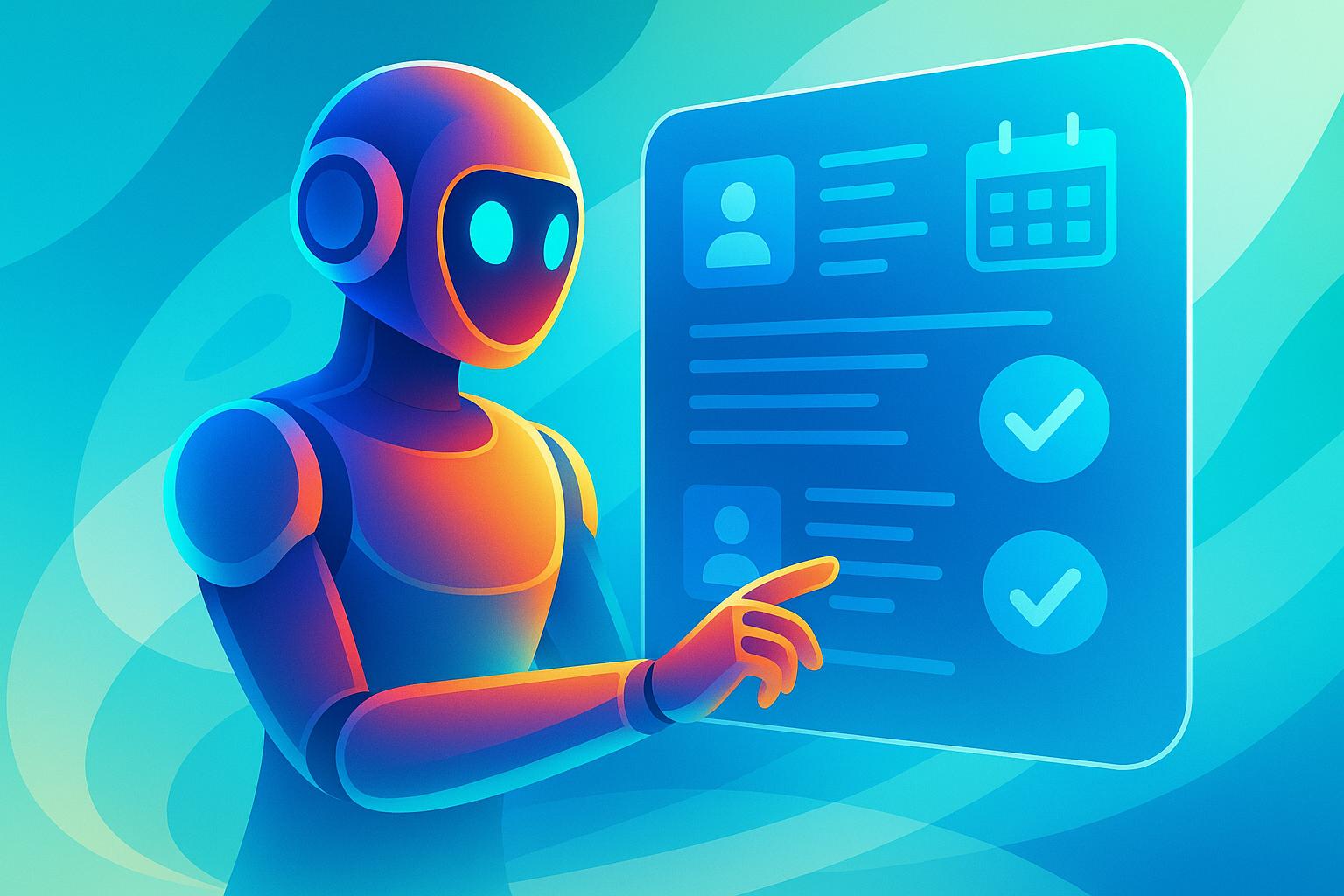AI is changing tenant screening by making it faster, more accurate, and reliable. Here’s how it works:
- What AI Does: It analyzes data like credit scores, payment history, and legal records to assess tenant risk.
- Key Tools: AI uses Natural Language Processing (NLP), pattern recognition, and predictive analytics to create detailed risk profiles.
- Benefits: Faster application processing, better risk evaluation, and compliance with housing laws.
Why It Matters: AI helps property managers save time, reduce errors, and make fairer decisions when selecting tenants.
Want to know how to integrate AI into your tenant screening process? Keep reading for a step-by-step guide and tips to stay compliant.
Core Functions of AI Tenant Screening
Main AI Tools and Features
AI tenant screening combines various data sources - credit reports, rental histories, and legal records - to create a detailed risk assessment. Here's how the key tools work:
- Natural Language Processing (NLP): Extracts important details from lease agreements, rental applications, and other documents.
- Pattern Recognition: Identifies trends and flags irregularities in payment and lease records that could signal potential risks.
- Predictive Analytics: Analyzes historical data to estimate tenant reliability and assist in making informed decisions.
Comparing AI and Manual Screening
Manual screening involves checking credit reports, rental histories, and legal records one by one. AI, on the other hand, brings all this information together into a single, detailed risk profile, making the process faster and more efficient.
⚡ How AI Reduced Tenant Screening Time by 75% for This ...
Key Data Sources for Risk Analysis
AI tools use specific data sources to improve tenant risk analysis, offering quicker and more dependable assessments than older methods.
Past Lease Performance
By studying past lease performance, AI identifies patterns in tenant behavior. This helps predict possible risks and provides a clearer view of tenant reliability.
Legal and Background Checks
AI incorporates public legal records and background check data to spot any financial or legal concerns that could indicate risk.
sbb-itb-11d231f
Setting Up AI Tenant Screening
Once you've identified key risk factors, the next step is to incorporate AI tools into your tenant screening process.
Choosing the Right AI Software
Pick AI tenant screening software that pulls from a variety of data sources while staying compliant with regulations. Look for tools that offer:
- Direct connections to credit bureaus for up-to-date reports
- Automated income verification using bank and employment data
- Fraud detection through document authentication
- Customizable risk scoring to match your property’s specific needs
Steps to Integrate AI Systems
Adding AI screening tools to your workflow requires a clear plan. Here’s how to do it:
- Data Migration: Review and document your current processes. Identify the key data you'll need.
- API Configuration: Set up secure links between your property management software and the AI platform.
- Testing: Run the AI system alongside your existing process to compare results and ensure accuracy.
Track metrics like screening speed, accuracy, and tenant feedback to evaluate the system’s performance. A smooth integration ensures your tenant screening process is both efficient and compliant.
Legal and Ethical Considerations
Stay aligned with the Fair Housing Act and state laws by following these best practices:
- Uniform Criteria: Use the same screening standards for every applicant.
- Transparency: Clearly explain the screening process and the factors behind decisions.
- Recordkeeping: Maintain detailed records of all screening activities.
- Regular Reviews: Check the AI system periodically to identify and address any potential biases.
Additionally, protect applicant data and issue adverse action notices when required under the Fair Credit Reporting Act (FCRA). These steps help ensure your screening process is fair, ethical, and compliant.
Current Limits and Future Growth
AI screening tools are constantly evolving, but there are still challenges to address and opportunities for improvement.
Tackling AI Bias
AI tenant screening systems can unintentionally reinforce existing biases. To address this, several steps can help ensure fairer outcomes:
- Regular Audits: Routinely review decisions and compare acceptance rates to spot any patterns of bias.
- Diversified Data Sources: Incorporate varied data, like rent history or utility bill payments, to create a more complete view of financial responsibility.
- Bias Testing: Run controlled tests to identify and address unintended discrimination in the system.
- Human Oversight: Involve trained staff to review AI-generated recommendations and flag potential issues.
These strategies help improve fairness and set the stage for better technology.
Emerging AI Tools
New AI advancements are making tenant screening processes more effective and reliable:
- Improved Fraud Detection: Advanced machine learning algorithms can now catch even sophisticated document forgeries.
- Instant Income Verification: Direct integrations with payroll providers allow for quick and accurate verification of employment and income.
- Behavioral Analysis: AI can analyze how applicants communicate, including response times, to identify potential concerns.
- Enhanced Predictive Models: By using broader datasets, AI can better forecast tenant behavior, considering factors like payment history, job stability, and maintenance requests.
These innovations are paving the way for smarter tools that improve risk assessment while ensuring compliance with housing regulations.
Conclusion
AI is transforming how tenant risk assessments are conducted, offering faster, more accurate, and consistent evaluations compared to traditional methods.
By integrating AI into tenant screening, property managers can uncover patterns that might go unnoticed through manual reviews while staying aligned with fair housing regulations. These systems improve the ability to detect and predict potential tenant risks effectively.
To make the most of AI in tenant screening, property managers should:
- Ensure human oversight remains a part of the process to maintain ethical practices
- Regularly update AI tools with fresh data and compliance standards
- Use multiple evaluation criteria to build well-rounded tenant profiles
- Prioritize data security to safeguard sensitive applicant information
Such practices not only support the effective use of AI but also prepare the way for future advancements in screening technology. With real-time data processing becoming more accessible, tenant evaluations are poised to become even more efficient and unbiased.


